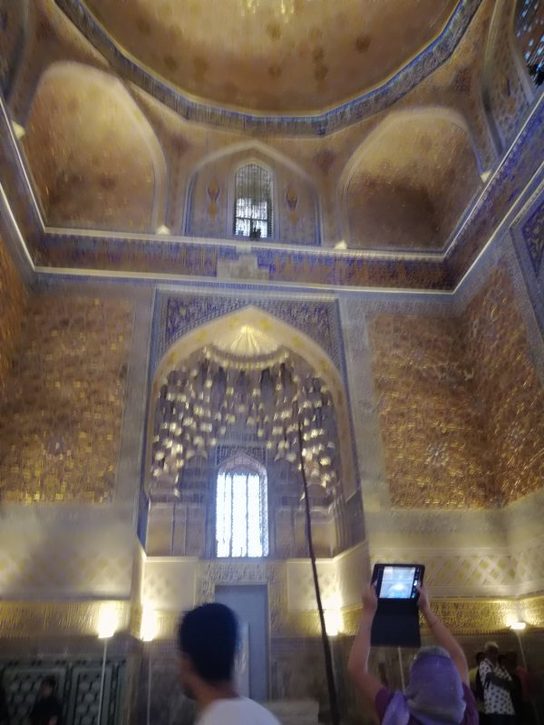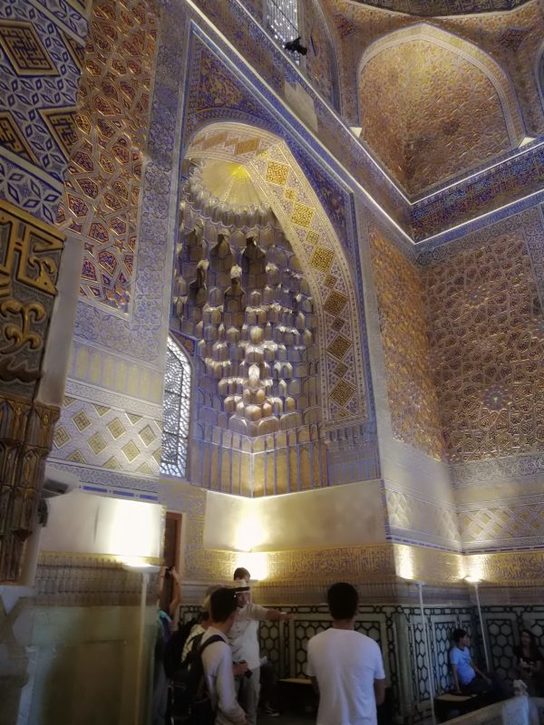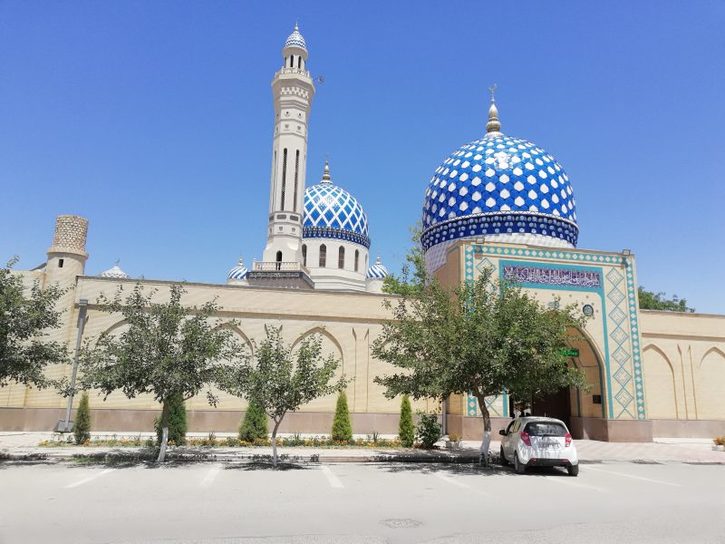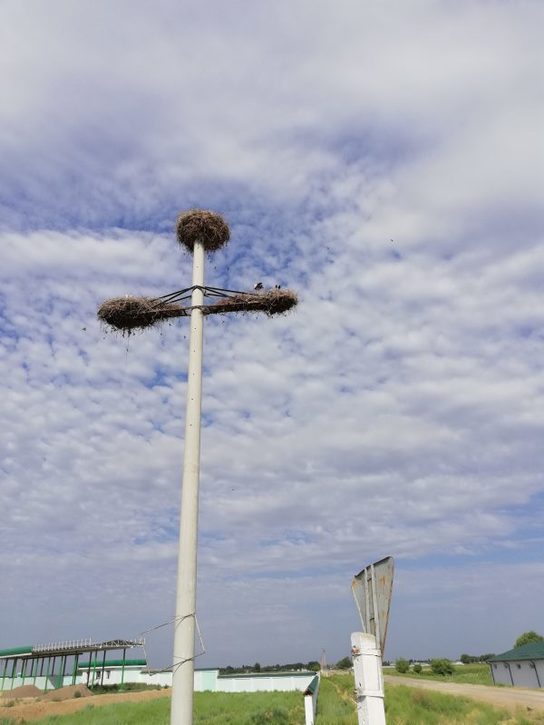The next day we drove to Gur-e-Emir and went inside. It is one of the highlights of the trip thus far, covered almost entirely in gold leaf. The blocks of stones are simply markers and the people are buried underneath. The original block for Timur was main of green jade, but was plundered in 1740 by the warlord Nadir Shah and taken to Persia. It accidentally broke in two, after which he suffered a run of bad luck and his advisors suggested he send it back to Samarkand. There is a stone for Sheikh Seyid Umar, said to be a descendant of the Prophet Mohammed, and Timur ordered the mausoleum built over his grave.
We then drove to Tashkent, past endless little roadside stalls selling potatoes on the way to Jizzakh through beautiful rolling grassland until we crossed a pass revealing a huge flat plain. There were then endless stalls selling fruit juice in bottles of all different colours, and then a stage of numerous truckers caffs, each with a small boy twirling a coloured rope to attract attention and pointing towards the caff he worked for. We saw dozens of storks’ nests on top of telegraph poles and were occasionally rewarded by the sight of a stork standing up and spreading its wings.
I wanted to see Tashkent which was flattened by an earthquake in 1966 and has since been rebuilt to a city of over 2 million people. Sadly they didn’t get round to installing road signs and, like Tbilisi and Yerevan, we struggled to get out of it. Three very kind men suggested we followed their car until they put us on the right road and two friendly men who worked at a truckers caff said we could sleep on their parking space when we asked them.



